Essays
Essays

On Letters
On Letters is an epistolary essay, structured as thirteen wide-ranging and personal letters to the late conceptual artist On Kawara. Playing with language and its limits, the letters focus first on the artist’s five decade long body of “Date Paintings” and their relationship to typography. Yet from this starting point, the writing swerves to encompass topics such as the creative process, mindfulness, numbering systems, race, narrative structures, and more. On Letters is a unique glimpse into one artist’s inner dialogue and an exploration of how the solitary practice of artmaking can spark other transformations in the world.
"No one is better placed to reflect on On Kawara’s perfect marriage of typography and ontology than Prem Krishnamurthy. An intellectual triumph and a true labour of love." —Tom McCarthy
Prem Krishnamurthy (b. 1977) is a designer, author, and educator. He directs Wkshps, a multidisciplinary design consultancy and organizes Department of Transformation, an emergent, itinerant workshop that practices collaborative tools for social change. He has directed and curated large-scale exhibitions including Oh, Gods of Dust and Rainbows, the 2022 edition of FRONT International: Cleveland Triennial for Contemporary Art; Our Silver City, 2094 at Nottingham Contemporary; and Ministry of Graphic Design in Sharjah, UAE.

What Design Can’t Do: Essays on Design and Disillusion
Design is broken. Young and not-so-young designers are becoming increasingly aware of this. Many feel impotent: they were told they had the tools to make the world a better place, but instead the world takes its toll on them. Beyond a haze of hype and bold claims lies a barren land of self-doubt and impostor syndrome. Although these ‘feels’ might be the Millennial norm, design culture reinforces them. In conferences we learn that “with great power comes great responsibility” but, when it comes to real-life clients, all they ask is to “make the logo bigger.”
This book probes the disillusionment that permeates design. It tackles the deskilling effects provoked by digital semi-automation, the instances of ornamental politics fashioned to please the museum-educational complex, the nebulous promises of design schools. While reviving historical expressions of disenchantment, Silvio Lorusso examines present-day memes and social media rants. To depict this disheartening crisis, he crafts a new critical vocabulary for readers to build upon. What this exposé reveals is both worrying and refreshing: rather than producing a meaningful order, design might be just about inhabiting chaos.
What was once a promising field rooted in problem-solving has become a problem in itself. The skill set of designers appears shaky and insubstantial – their expertise is received with indifference, their know-how is trivialised by online services, their work is compromised by a series of unruly external factors. If you see yourself as a designer without qualities; if you feel cheated, disappointed or betrayed by design, this book is for you.

Living with Ghosts: A Reader
Living With Ghosts explores the ways the unresolved traumas of Africa’s colonial past, and its unfulfilled project of decolonisation, continue to haunt the present global order. The reader further expands on these complex ideas through philosophical, historical, and literary approaches. Reprinted texts by thinkers such as Achille Mbembe, C.L.R. James, and Sabelo J. Ndlovu-Gatsheni explore the historical experiences of the African postcolony and the problematics of decolonisation. Meditations on artists including John Akomfrah and Abraham Oghobase provide engaging entry points to their multi-layered artistic practices. Also featured are images of artworks in the exhibition and an in-depth conversation between Bouchra Khalili and KJ Abudu.
Texts by Achille Mbembe, Jacques Derrida, C.L.R. James, Sabelo J. Ndlovu-Gatsheni, KJ Abudu, Emmanuel Iduma, Walter D. Mignolo, Avery F. Gordon, Adjoa Armah, Joshua Segun-Lean. Conversation with Bouchra Khalili and KJ Abudu.

Pier Paolo Pasolini: Writing on Burning Paper
Annabel Brady-Brown, Giovanni Marchini Camia
Published on the centenary year of Pasolini’s birth, Pier Paolo Pasolini: Writing on Burning Paper is a dual edition that stages a dialogue between cinema today and Pasolini’s timeless films and words.
The two complementary volumes slide into one another, forming a unique set that evokes and celebrates Pasolini’s enduring influence. The smaller book features his epic autobiographical poem ‘Poet of the Ashes’, in a revised translation by esteemed poet Stephen Sartarelli; the larger book comprises original tributes by vital filmmakers from across the contemporary cinema landscape.
Twenty filmmakers shared personal reflections in the form of essays, poems, photographs, drawings and more: Catherine Breillat, Luise Donschen & Helena Wittmann, Jia Zhangke, Radu Jude, Payal Kapadia, Alexandre Koberidze, Dane Komljen, Mike Leigh, Mariano Llinás, Roberto Minervini, Valérie Massadian, Luc Moullet, Ben Rivers, Angela Schanelec, Ulrich Seidl, Basma al-Sharif, Deborah Stratman, Anocha Suwichakornpong and Gustavo Vinagre.
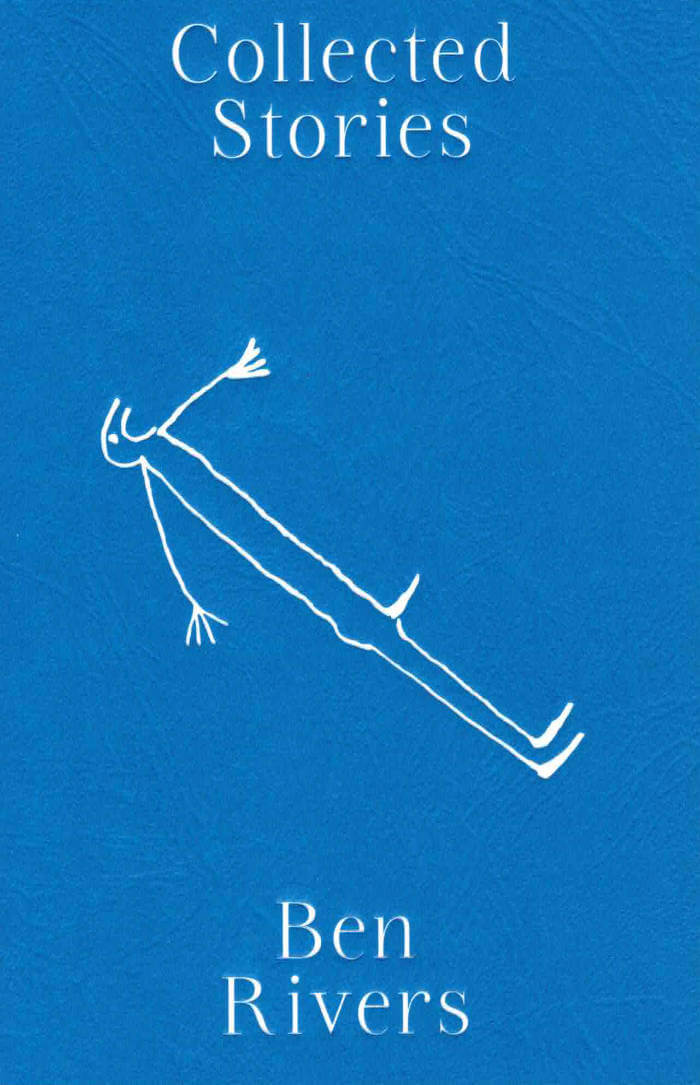
Ben Rivers: Collected Stories
Collected Stories is, as implied by the title, a collection of stories, curated by Ben Rivers. Fiction and poetry have always been an essential source of inspiration for his filmmaking. On the occasion of the retrospective Ghost Strata, and other stories, held at Jeu de Paume in Paris in November 2023, he decided to bring his films in conversation with writers who have influenced him over the years. Rivers invited fourteen authors to watch one of his films and respond in writing in any way they wished. Imaginative and surprising, the fables, essays and poems of Collected Stories come together in a beautiful celebration of the work of one of contemporary cinema’s vital artists, doubling as a testament to the reciprocal nature of inspiration.
The authors of these collected stories are Gina Apostol, Chloe Aridjis, Kevin Barry, Xiaolu Guo, Golan Haji, M John Harrison, Daisy Hildyard, Nathalie Léger, Vanessa Onwuemezi, Helen Oyeyemi, Iain Sinclair, Irene Solà, Lynne Tillman and Marina Warner.

Tale of cinema
In the fourth title of the acclaimed DecadentEditions series, Dennis Lim explores the oeuvre of South Korean auteur Hong Sangsoo via his 2005 film. Forty minutes in, we realise we’ve been watching a film within the film. The ‘real’ characters leave the cinema and find themselves reenacting what they just saw, as a chance encounter invites a suicide pact. Is it life imitating art, or the other way around? Dennis Lim is a film curator, teacher, and writer. He is currently the Artistic Director of the New York Film Festival.

Inland Empire
‘Inland Empire’ is a film by David Lynch about a once-feted Hollywood actress who is cast in a movie that is rumoured to be cursed. From a queer, feminist perspective, film critic Melissa Anderson examines how Lynch’s late masterpiece is not only a brilliant evocation of how images work on the mind, but how powerful “acteurs” are in the creation of dreamlike cinema. Laura Dern’s astonishing performance, as the film’s realities splinter and identities multiply, is elucidated by Anderson through her deep affection and respect for Lynch. The book is part of the Decadent Editions series, which examines one film for every year of the 2000s, each a milestone of contemporary cinema.

Ten Skies
Ten shots of the sky, each ten minutes long. That’s all it takes to describe James Benning’s film from 2004. And yet, this simplicity conceals a rich and absorbing drama, one of the great works of the American avant-garde. Scholar and critic Erika Balsom unfolds its hidden intricacies of meaning, extending its lessons with crystalline prose, a comparable sense of depths, and an exhilarating, maximalist intimation of what criticism can do and become. She brings you from the film itself into the mind of the artist, through philosophical musings and art historical scholarship. The book is part of a Decadent Editions series of 10 books about 10 films.

Tar Hollow Trans: Essays
"I've lived a completely ordinary life, so much that I don't know how to write a transgender or queer or Appalachian story, because I don't feel like I've lived one.... Though, in searching for ways to write myself in my stories, maybe I can find power in this ordinariness."
Raised in southeast Ohio, Stacy Jane Grover would not describe her upbringing as "Appalachian." Appalachia existed farther afield—more rural, more country than the landscape of her hometown.
Grover returned to the places of her childhood to reconcile her identity and experience with the culture and the people who had raised her. She began to reflect on her memories and discovered that group identities like Appalachian and transgender are linked by more than just the stinging brand of social otherness.
In Tar Hollow Trans, Grover explores her transgender experience through common Appalachian cultural traditions. In "Dead Furrows," a death vigil and funeral leads to an investigation of Appalachian funerary rituals and their failure to help Grover cope with the grief of being denied her transness. "Homeplace" threads family interactions with farm animals and Grover's coming out journey, illuminating the disturbing parallels between the American Veterinary Association's guidelines for ethical euthanasia and the World Professional Association for Transgender Health's guidelines for transgender care.
Together, her essays write transgender experience into broader cultural narratives beyond transition and interrogate the failures of concepts such as memory, metaphor, heritage, and tradition. Tar Hollow Trans investigates the ways the labels of transgender and Appalachian have been created and understood and reckons with the ways the ever-becoming transgender self, like a stigmatized region, can find new spaces of growth.
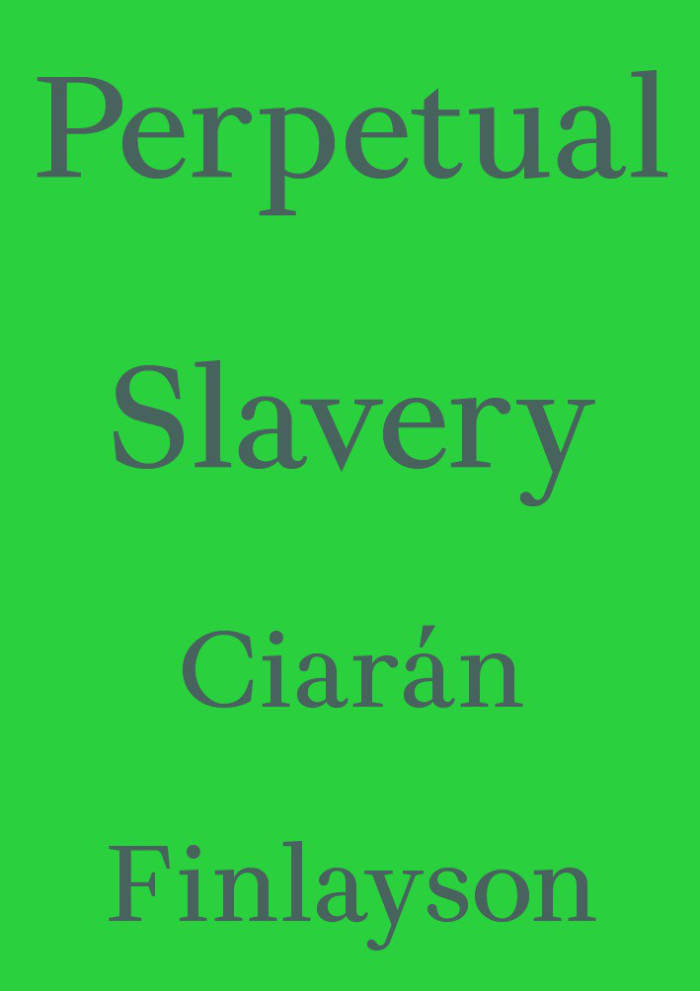
Perpetual Slavery
In Perpetual Slavery, Ciarán Finlayson investigates the relationship of art to freedom in the work of Cameron Rowland and Ralph Lemon, who both utilize imagery of labor haunted and structured by the historical experience of slavery.
Finlayson suggests that these two artists' work overcomes the dichotomy between the recording of history and its interpretation by making both the object of artistic experience, thereby providing a space to grasp the continuing effects of slavery.
Ciarán Finlayson is a writer and editor based in New York City. His essays have appeared in periodicals including Artforum, Bookforum, Papers on Language and Literature, Studio magazine, Kunst und Politik, PARSE, Archives of American Art Journal, and 032C. He is the managing editor of Blank Forms. His primary research is on contemporary art with emphases on Marxism, Black studies, philosophy of history, and conceptual art. He writes with the London-based Black Study Group and is a founding member of the political education collective Hic Rosa.

First Floor Vol 1: Reflections on Electronic Music Culture
Written by veteran journalist Shawn Reynaldo, First Floor is a weekly newsletter that focuses on electronic music, along with the culture and industry that surround it. Over the course of just a few years, it’s become one of electronic music’s most influential platforms, routinely putting many of the genre’s thorniest issues under the microscope while reckoning with changes in the culture during a time of profound transformation.
A collection of Reynaldo’s most thought-provoking essays, First Floor Volume 1 provides a nuanced, wide-ranging look at contemporary electronic music culture, with a particular focus on systemic issues that often go undiscussed.
Topics covered included the evolving nature of electronic music fandom and artistry, value shifts brought on by the current changing of the generational guard, the shortcomings of the modern music press and the growing gap between electronic music’s foundational rhetoric and the genre’s present-day norms.
Incorporating both pieces originally published in the newsletter (all of which have been updated) and exclusive new material from Reynaldo himself, the book also features a foreword by veteran artist and 3024 label founder Martyn.

Read Me: Selected Works
Read Me gathers the tools necessary to make sense of contemporary problems so ubiquitous they seem too big to name. Spanning a multiplicity of genres, media, and tonal registers, this book surveys Holly Melgard’s formally experimental poetic works produced between 2008 and 2023, including sound poems, essays on poetics, and books that exploit print on demand to, for example, counterfeit money. In often wildly comic turns of thought, Melgard’s work cleaves personal agency from automated defaults by mapping trauma and technocracy from the inside out.
From critical talks to fictional monologues, the poet translates into language the unremarkable torments of neoliberalization in the digital age.

You spin me around: essays on music
Nathan O’Donnell, Niamh Dunphy and 1 more
You spin me round is an illuminating collection of essays, an essential mixtape that takes elements of music – songs, performances, albums, gigs – as points of departure. Some of the finest writers at work today reflect on what music has meant to them at different moments in their lives.
The writers sift through the material artefacts of their music worlds – torn ticket stubs, creased flyers, worsted wristbands – those items that slip out of a book or the back of a drawer, or that appear crumpled in the pocket of an old coat. You spin me round is a compilation of totems, a distillation of ineffable musical experiences.
With contributions by Ciaran Carson, Brian Dillon, Wendy Erskine, Aingeala Flannery, Peter Geoghegan, Colin Graham, M. John Harrison, Tabitha Lasley, Declan Long, Jayne A. Quan, McKenzie Wark, and Sydney Weinberg.

Prayers Manifestos Bravery
First published in 2018, Prayers Manifestos Bravery is a collection of Verity Spott’s “Trans* Manifestos”. Written from 2011 and originally published on her blog, the book’s content ranges from concrete poetry to long-form dispatches, confessions and manifestos touching on questions of identity, gender, justice and society.
“This is a collection of attempted manifestos whose composition began in 2011. It does not pretend to be completed and any life it has is in its capacity for change, movement and instability. These manifestos are described as such because at the time of their composition they felt like attempts of preservation; of life and of the capacity to struggle against life. They are all improvisations. They have not been heavily edited, and they are untidy. We're unsure what we are." — preface by the author
Verity Spott is a poet, teacher and care worker from Brighton, England. She is the author of the books Gideon, Click Away Close Door Say, We Will Bury You, The Mutiny Aboard the RV Felicity, Prayers Manifestos Bravery, Poems of Sappho (in translation), Hopelessness, Coronelles Set 1 and 70 Sonnets. Verity's poetry has appeared in The New York Times and has been translated into French, German and Greek.

A Rage in Harlem – June Jordan and Architecture
Pennsylvania State Senator Nikil Saval tells the story of an unlikely partnership between June Jordan and R. Buckminster Fuller, and their attempt to reimagine Harlem in the wake of the 1964 riots.
In the tense days leading up to the 2020 American elections, design critic and then-candidate for Pennsylvania State Senate Nikil Saval addressed a virtual audience at the Harvard GSD to tell a story about Black feminist writer June Jordan and a little-known project that resulted from the aftermath of the 1964 Harlem riot. The events of police brutality and community grieving made a lasting impression on Jordan, who, while known for her work as a poet, playwright, and activist, responded with a proposal for a multiple-tower housing design. Through an unlikely partnership with R. Buckminster Fuller, Jordan's "Skyrise for Harlem" project offered a Futuristic vision for Harlem that argued for environmental redesign: "it is architecture, conceived of in its fullest meaning as the creation of environment, which may actually determine the pace, pattern, and quality of living experience." Jordan was not an architect in the conventional sense, Saval says. "But in the understanding of someone who sought to propose and build interventions in public space, she was."
Nikil Saval (born 1982) is an Indian-American magazine editor, writer, organizer, activist, and politician, member of the Democratic Party.
Foreword by Sarah M. Whiting.

Everybody Talks About the Weather... We Don't
No other figure embodies revolutionary politics and radical chic quite like Ulrike Meinhof, who formed, with Andreas Baader and Gudrun Ensslin, the Red Army Faction (RAF), also known as the Baader-Meinhof Gang, notorious for its bombings and kidnappings of the wealthy in the 1970s. But in the years leading up to her leap into the fray, Meinhof was known throughout Europe as a respected journalist, who informed and entertained her loyal readers with monthly magazine columns.
Everybody Talks ABout the Weather... We Don't asks: What impels someone to abandon middle-class privilege for the sake of revolution? In the 1960s, Meinhof began to see the world in increasingly stark terms: the United States was emerging as an unstoppable superpower, massacring a tiny country overseas despite increasingly popular dissent at home; and Germany appeared to be run by former Nazis. Never before translated into English, Meinhof's writings show a woman increasingly engaged in the major political events and social currents of her time. In her introduction, Karin Bauer tells Meinhof's mesmerizing life story and her political coming-of-age; Nobel Prize winning author Elfriede Jelinek provides a thoughtful reflection on Meinhof's tragic failure to be heard; and Meinhof's daughter—a relentless critic of her mother and of the Left—contributes an afterword that shows how Meinhof's ghost still haunts us today.
Edited, with an introduction by Karin Bauer
Preface by Elfriede Jelinek
Afterword by Bettina Röhl
Translated by Luise von Flotow
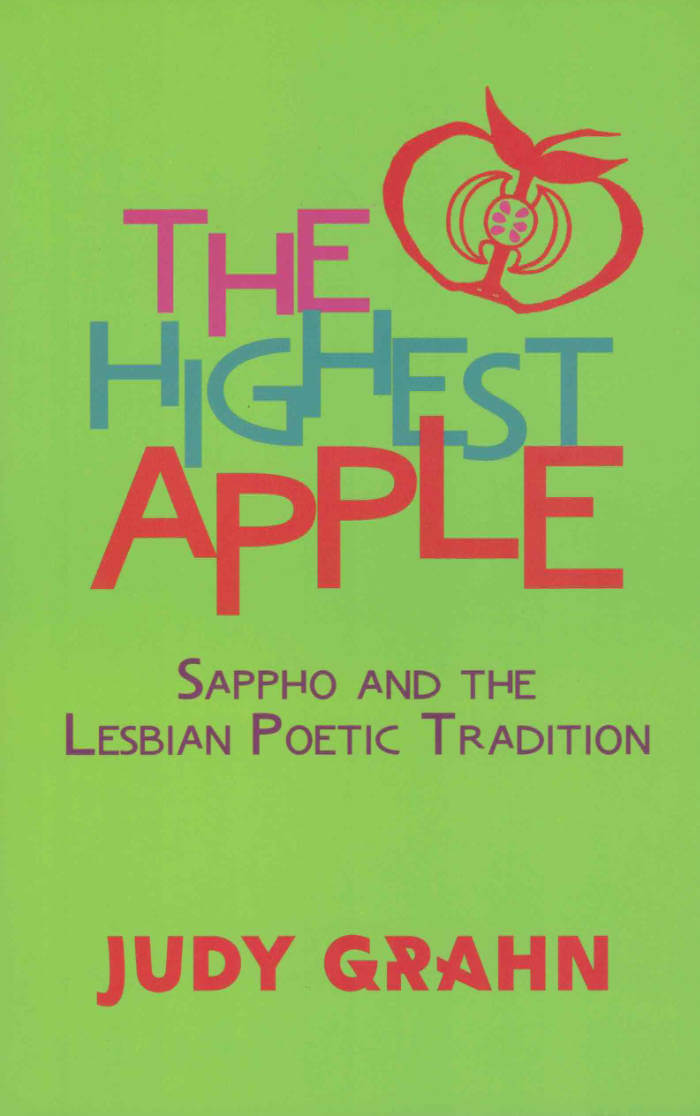
The Highest Apple: Sappho and the Lesbian Poetic Tradition
In 1985, Judy Grahn boldly declared that lesbians have a poetic tradition and mapped it from Sappho to the present day in the groundbreaking book, The Highest Apple. In this new and updated edition of The Highest Apple: Sappho and the Lesbian Poetic Tradition, Grahn revisits the original text with her characteristic ferocious intellect, passion for historical research, careful close readings, and dynamic storytelling. Grahn situates poetry by Sappho, Emily Dickinson, Amy Lowell, H.D., Gertrude Stein, Adrienne Rich Paula Gunn Allen, Audre Lorde, Pat Parker, and Olga Broumas as central to lesbian culture—and more radically as central to society as a whole.
This new edition of The Highest Apple: Sappho and the Lesbian Poetic Tradition includes Grahn’s in depth analysis of poetic work by her friend and comrade Pat Parker and suggests a transactional approach to poetry as uncovering layers of the self. Grahn assembled this text in conversation with two younger lesbian poets, Alicia Mountain and Alyse Knorr, demonstrating the continued relevance and dynamism of The Highest Apple for contemporary readers. A new introduction by Grahn, a foreword by Alyse Knorr, and editor notes by Alicia Mountain along with six responses by contemporary poets Donika Kelly, Kim Shuck, Serena Chopra, Zoe Tuck, Saretta Morgan, and Khadijah Queen highlight the on-going significance of The Highest Apple to readers, writers, and thinkers.
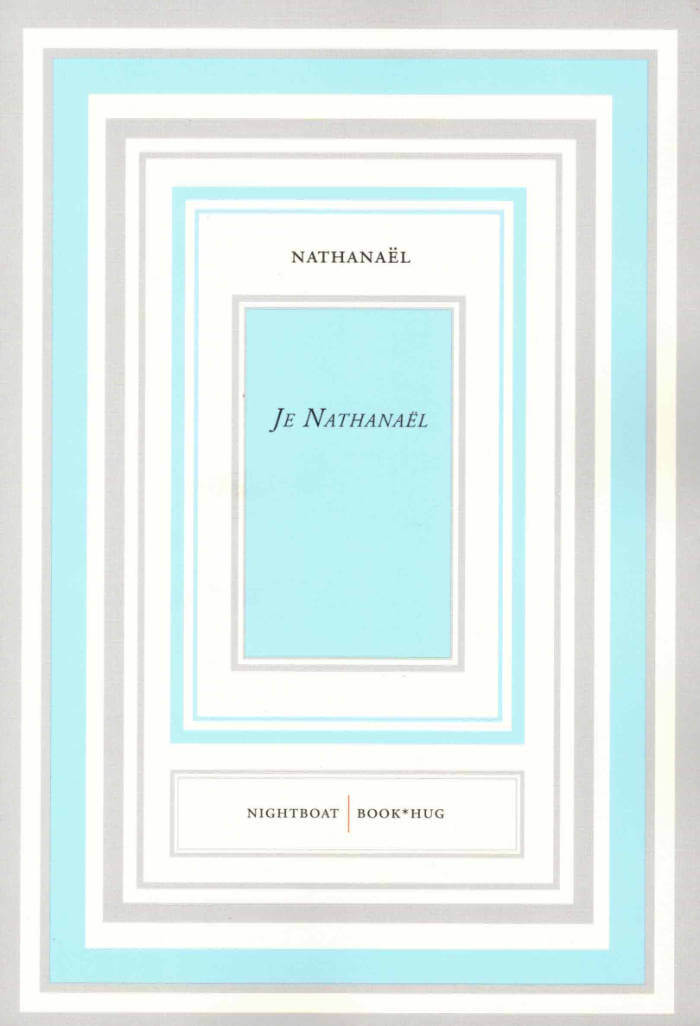
Je Nathanael
In Je Nathanaël, first published in 2006, Nathanaël explores ways in which language constrains the body, shackles it to gender, and proposes instead a different way of reading, where words are hermaphroditic and transform desire in turn. Suggesting that one body conceals another, it lends an ear to this other body and delights in the anxiety it provokes. With parts written in French, other parts in English, this is truly a hybrid text, throwing itself into question as it acts upon itself in translation. It is both originator and recipient of its own echo. In this regard it does not, cannot exist, pulling insistently away from itself in an attempt to draw attention to the very things it seeks to conceal. In this way, Je Nathanaël is a book of paradox, negating itself as it comes into being.
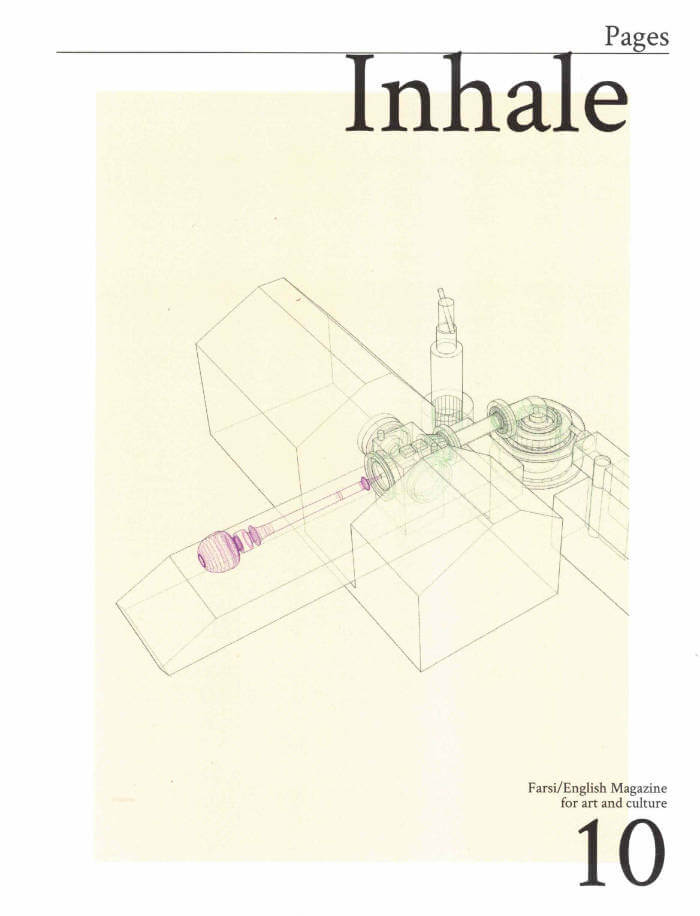
Pages 10 - Inhale
Nasrin Tabatabai, Babak Afrassiabi
The theme of this issue of Pages was triggered by the idea of opium smoke as a ‘writing machine.’ Since the early opium trade, there has been writing not only on opium, but also through opium, especially in countries linked to past and present drug networks. In this issue we are tapping into the deeply rooted relationship between writing and drugs, especially beyond the Western literary tradition, and wondering about the current conceptual and material derivatives of intoxication with which we can machinate new extremities in our chemical, historical and technological relations to the world.
With contributions by:
- Jason Bahbak Mohaghegh / Smoke, Drug, Poison: A Philosophy of the Faramoosh-Khaneh (Opium Den)
- Pages / Dissolving, Mixing, Melting, Stirring (the Smoke)
- Hung-Bin Hsu / The Taste of Opium: Science, Monopoly and the Japanese Colonization in Taiwan, 1895—1945
- Saleh Najafi / Hedayat: The Opium of Translation and Creating the Impossible Memory
- Patricia Reed / The Toxicity of Continuity
- Fuko Mineta / A Monster Appears in Qingtian
- Morad Farhadpour / Inside and Outside Addiction
- Mohammad-Ali Rahebi / Of Junk and Time: Trauma, Habit, Capitalism

A take away cup and a cloud
A take away cup and a cloud is an essay written alongside the dance performance Seems to be by Denise Lim and Stina Ehn. It plays with a variety of containers–the list form being one. By mixing a personal with a historical gaze it traces the trajectory of mundane commodities and the replacement of material with imaterial objects brought about to the everyday by technical progress.
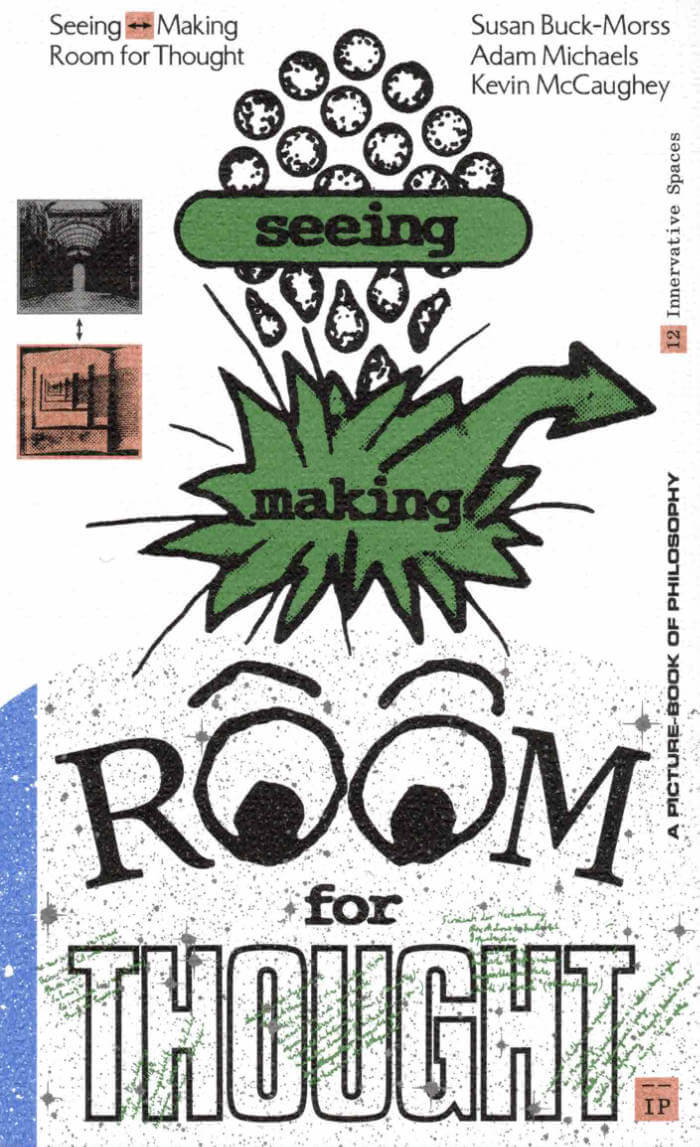
Seeing Making: Room for Thought
Adam Michaels, Kevin McCaughey and 1 more
Seeing <―> Making: Room for Thought both studies and presents the creative process of constructing ideas with images. By activating the techniques of montage, the book reveals a wide field of view and a space to engage new critical connection between a multiplicity of objects from the past and present. Realized through an intergenerational collaboration of three cultural producers committed to making theory visible, a transformative anthology of critical essays by Susan Buck-Morss anchors this kaleidoscopic project. Images and ideas sync with Buck-Morss’ perceptive texts on visual culture, history, politics, and aesthetics, fusing criticism with visual play and linking collective imagination and social action.
Building upon the methods and ways of seeing put forth by visual thinkers like Walter Benjamin and John Berger, designer Kevin McCaughey (Boot Boyz Biz), designer, editor, and publisher Adam Michaels (IN-FO.CO/Inventory Press), and renowned theorist Buck-Morss collectively assemble colliding material into new relation. What results is a (typo-) graphic articulation that thinks seriously about the stakes of ideation and reorients the space of the book in the service of a theory and philosophy that speaks the language of our image-based information age.

Whites, Jews, and Us: Toward a Politics of Revolutionary Love
A scathing critique of the Left from an indigenous anti-colonial perspective.
With Whites, Jews, and Us, Houria Bouteldja launches a scathing critique of the European Left from an indigenous anti-colonial perspective, reflecting on Frantz Fanon's political legacy, the republican pact, the Shoah, the creation of Israel, feminism, and the fate of postcolonial immigration in the West in the age of rising anti-immigrant populism. Drawing upon such prominent voices as James Baldwin, Malcolm X, and Jean Genet, she issues a polemical call for a militant anti-racism grounded in the concept of revolutionary love.
Such love will not come without significant discomfort for whites, and without necessary provocation. Bouteldja challenges widespread assumptions among the Left in the United States and Europe—that anti-Semitism plays any role in Arab-Israeli conflicts, for example, or that philo-Semitism doesn't in itself embody an oppressive position; that feminism or postcolonialist theory is free of colonialism; that integrationalism is a solution rather than a problem; that humanism can be against racism when its very function is to support the political-ideological apparatus that Bouteldja names the "white immune system."
At this transitional moment in the history of the West—which is to say, at the moment of its decline—Bouteldja offers a call for political unity that demands the recognition that whiteness is not a genetic question: it is a matter of power, and it is high time to dismantle it.
"Why am I writing this book? Because I share Gramsci's anxiety: "The old are dying and the new cannot be born; in this interregnum a great variety of morbid symptoms appear." The fascist monster, born in the entrails of Western modernity. Of course, the West is not what it used to be. Hence my question: what can we offer white people in exchange for their decline and for the wars that will ensue? There is only one answer: peace. There is only one way: revolutionary love." — from Whites, Jews, and Us
This Semiotext(e)/Intervention series English-language edition includes a foreword by Cornel West.

Bad Infinity – Selected Writings
The most significant critical, theoretical, and art historical texts by the artist, writer, and filmmaker Aria Dean.
Compiled here for the first time, the selected writings of Aria Dean mount a trenchant critique of representational systems. A visual artist and filmmaker, Dean has also emerged as one of the leading critical voices of her generation, through a body of writing that maps the forces of aesthetic theory, image regimes, and visibility onto questions of race and power. Dean's work across media has long been defined by what she calls a "fixation on the subject and its borders," and the texts collected here filter that inquiry through digital networks, art history, and Black radical thought. Equally at home discussing artists who embrace difficulty—from Robert Morris to David Hammons, Lorna Simpson, and Ulysses Jenkins—and conceptual frameworks such as Afropessimism, Dean often contends with how theoretical positions brush against the grain of lived reality: how the Structuralism handed down from the academy, for instance, can be co-mingled with critiques of structural racism, or how Georges Bataille's notion of base matter transforms through an encounter with Blackness.
Dean's thinking embraces a definition of "Black art that luxuriates in its outside-the-world-ness," as she writes in this volume, which works to elucidate "Blackness's proclivity for making and unmaking its own rules as it produces objects" of cultural necessity. Originally published in November as well as in Texte zur Kunst, e-flux journal, and in exhibition contexts, the essays compiled in Bad Infinity were written over a six-year span that charts our rapidly evolving forms of subjectivity and sociality.
Aria Dean (born 1993 in Los Angeles ) is an American artist, critic, writer and curator. Her writings have appeared in various art publications including November (of which she is a founding editor), Texte zur Kunst, Artforum, e-flux, The New Inquiry, Art in America, Topical Cream, Cura., Mousse, Flash Art, Spike, etc.

Oral History of Exhibitions
Of course there is the practice of art by the artist, but an exhibition is even more so an engagement between people, places, institutions, projections, desires, coincidences, memories, and temporalities. In this monograph, artist Megan Francis Sullivan chooses the format of oral history, engaging various akteurs of the field to produce a web of language reflecting a shape of time.